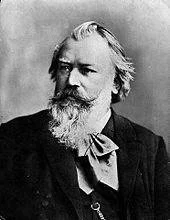Brahms 4th Symphony, 4 Movement
Johannes Brahms (1833 – 1897)
The four symphonies of Brahms each are masterpieces in their own right. My favorite is the fourth symphony, and the last movement (definition 4c) is especially compelling.
This movement is sometimes called a chaconne, an old form of music in triple meter, consisting of a theme (heard right at the beginning of this movement) and variations. The harmony in a chaconne often is repeated. It is a kind of Theme and Variations form, in this case a theme and 30 variations. The emotional sweep and structure of Brahms’s fourth movement is overpowering and beautiful.
Subscribe to receive an email notice when I post a new blog article.
Please leave a comment on the original post.
